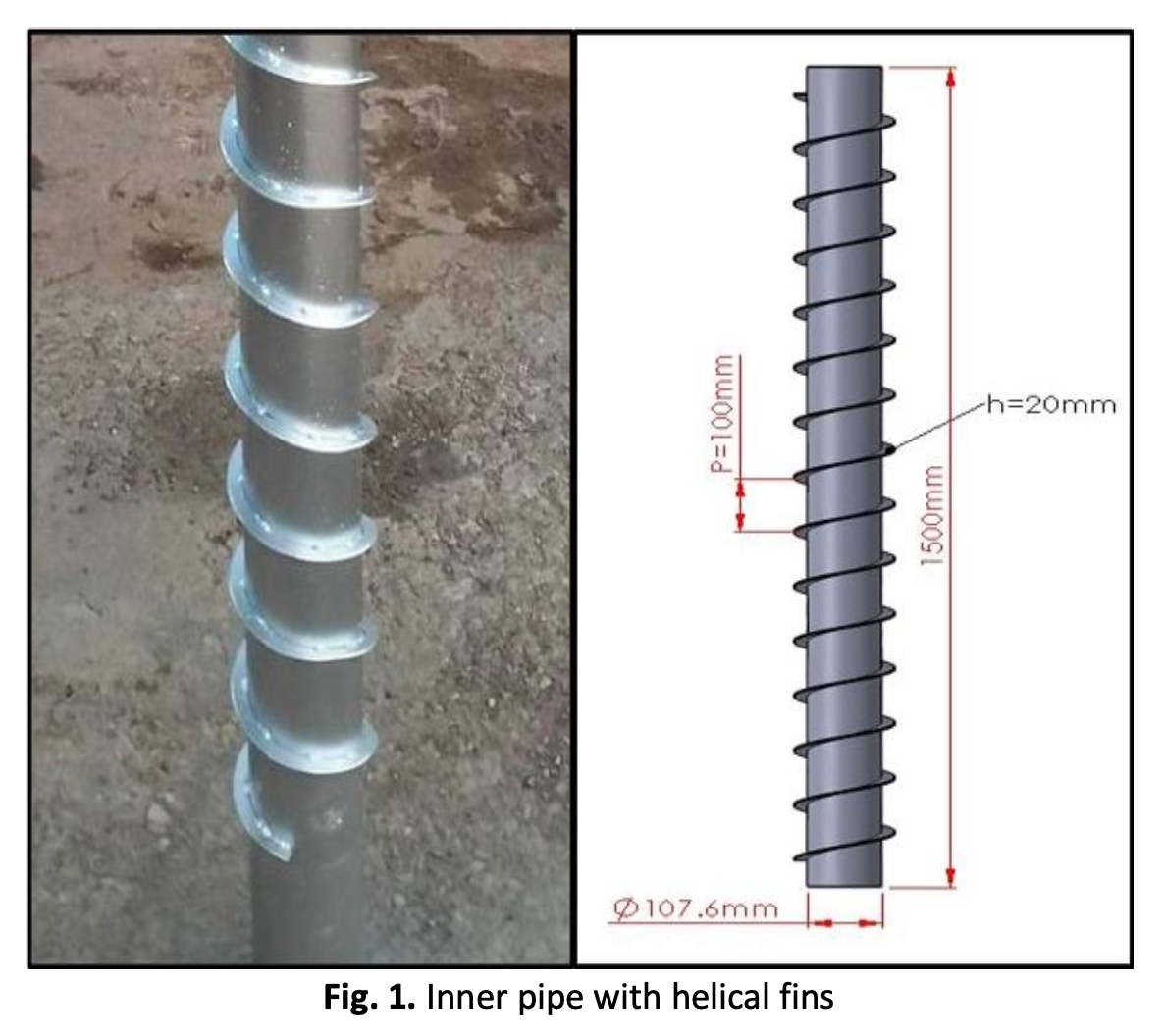An Experimental Study of Heating Heavy Fuel Oil by Hot Air using Helical Fins in a Double-Pipe Heat Exchanger
DOI:
https://doi.org/10.37934/arfmts.112.2.102115Keywords:
Hear transfer, double pipe heat exchanger, helical fins, heavy fuel oilAbstract
In present work, the effect of helical fins with height 20 mm and pitch 100 mm on the performance of the double pipe heat exchange investigated experimentally. The heat exchanger had been chosen as a heat recovery device in bricks factory to recover heat from exhaust gases to preheat the heavy fuel oil. Air had been chosen as a hot gas instead of furnace exhaust gases because of the similar thermal properties and it flows in the inner pipe with different velocity (20, 27, and 34) m/s and inlet temperature (200, 225) °C while, heavy fuel oil enters shell side with counter flow at mass flow rates (0.06, 0.08, and 0.1) kg/s and constant inlet temperature of 40 °C. Both of pipes and helical fins are made from stainless steel. The experimental results show that increasing Reynolds number from 139139 to 333934 led to increase heat transfer rate, oil outlet temperature, overall heat transfer coefficient and effectiveness of heat exchanger with (8%, 4%, 5% and 5%) respectively while, increasing oil mass flow rate from (0.06 to 0.1) kg/s cause decreasing oil outlet temperature and effectiveness of with (10% ,14%) respectively. The results shown the double pipe heat exchanger with helical fins produce heat transfer rate and oil outlet temperature higher than smooth double pipe heat with average 15% and 8.6%, as well as increasing Nusselt number, Overall heat transfer coefficient and effectiveness of heat exchanger with average 26%,15% and 13% respectively. The results clear that, for 225°C exhaust air and velocity 27 m/s, the application of double pipe with helical fins by preheat heavy fuel oil could reduce the viscosity and reduce electric power required and save 1.69 MW annually for one factory.
Downloads

































